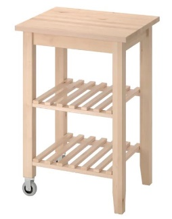Matthew, a recent graduate of Wilfrid Laurier University in Ontario, lived off-campus with roommates for most of his post-secondary education. We talked to him about the ways that he managed his allergies to peanuts and tree nuts and his advice for other students with food allergy.
You lived in residence your first year, what prompted you to move off campus in your second year?
When I lived in residence and was on the meal plan, I didn’t really have any issues. I was able to eat most foods except for desserts, which I typically avoided anyway. Living on campus is ideal as a first-year student, but housing is limited, and most students move off campus from second year on.
What was your off campus living situation and did you have any “house” rules?
In my second year, I moved in with four other guys to an apartment. All of us had our own bedrooms, and we shared a kitchen and living room.
I think my food allergies were easier to manage because two of my roommates were very familiar with them. One roommate has been a friend of mine since kindergarten and another roommate had worked with me at a summer camp. My camp friend knew about my food allergies and had experience with campers who had food allergies, too.
Sometimes my roommates brought foods with peanuts or tree nuts into our house. This was okay with me if they kept these items in their own rooms and did not bring them into common spaces like the kitchen. This was our biggest rule, and there was another rule about staying away from my food and things that I used in the kitchen. I had my own fridge, dishes, utensils and dishcloths.

Where did you live during your third year?
I started a co-op program with a different schedule, so I changed up roommates and apartments. This time, I got an Ikea kitchen cart, so I didn’t have to share counter space and worry about cross-contamination. I used the cart for meal prep – it had a cutting board and storage space for dishes and other things. This was really handy because it was convenient and served as a reminder to others that I had designated items to help me manage my food allergies and stay safe. When I wasn’t using the cart, I would keep it in my bedroom or place a roll of paper towel on top to act as an extra reminder for my roommates to stay clear of it.
What about fourth year?
By my last year, I lived with just one roommate in a new apartment, which made my food allergy much easier to manage overall.
What advice do you have for post-secondary students with food allergy?
First, it’s okay to be assertive and tell others about how you need to manage your food allergy. Sometimes it can feel awkward, but for the most part, people are willing to accommodate.
Second, don’t feel like you need to give in to peer pressure when it comes to eating food or sharing drinks at social events. The best plan is to only consume food or beverages that you bring with you when possible. Otherwise, if you are at a professional establishment, you should try to stick with what you have tried before or to ask the chef/bartender about ingredients before trying anything new.
